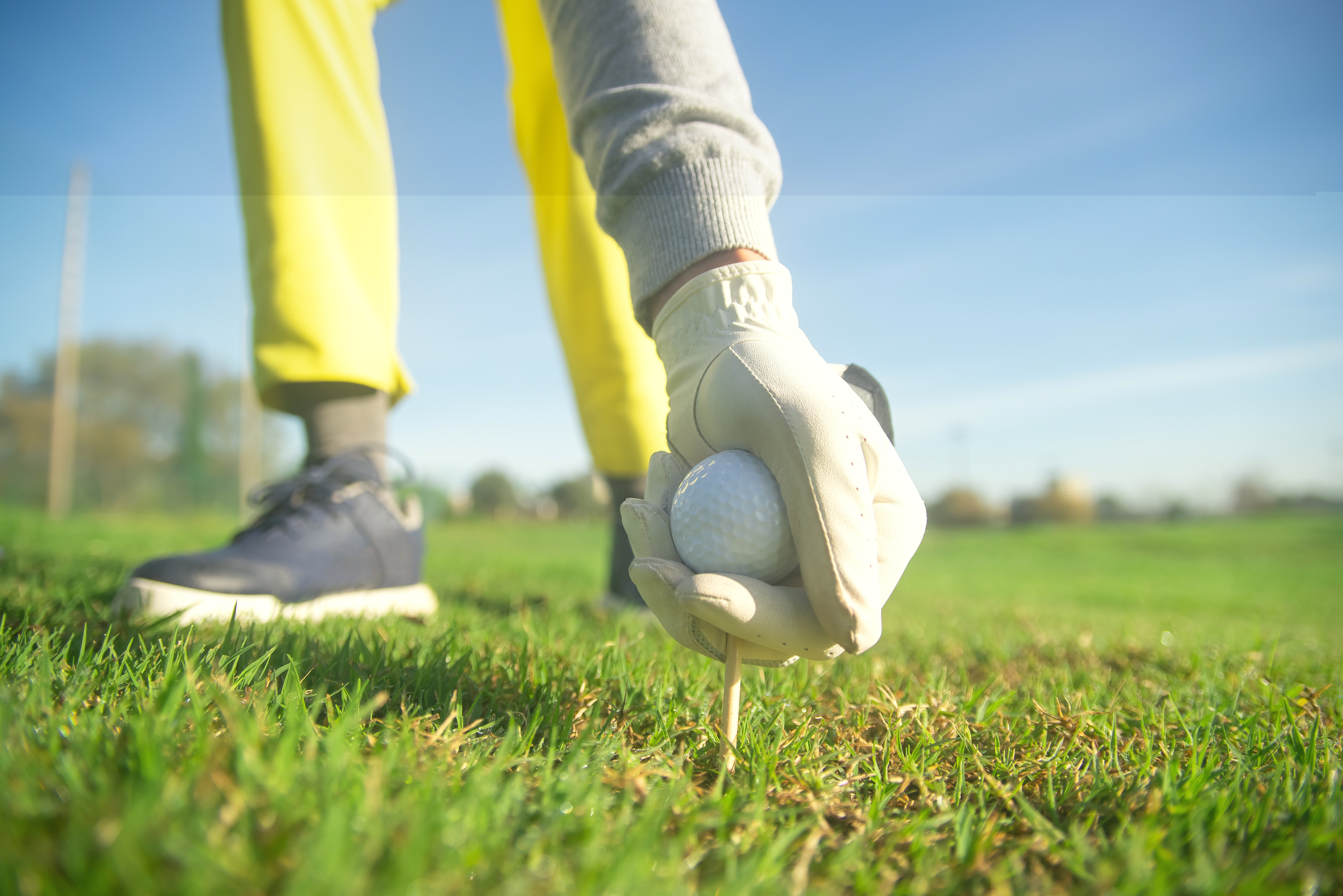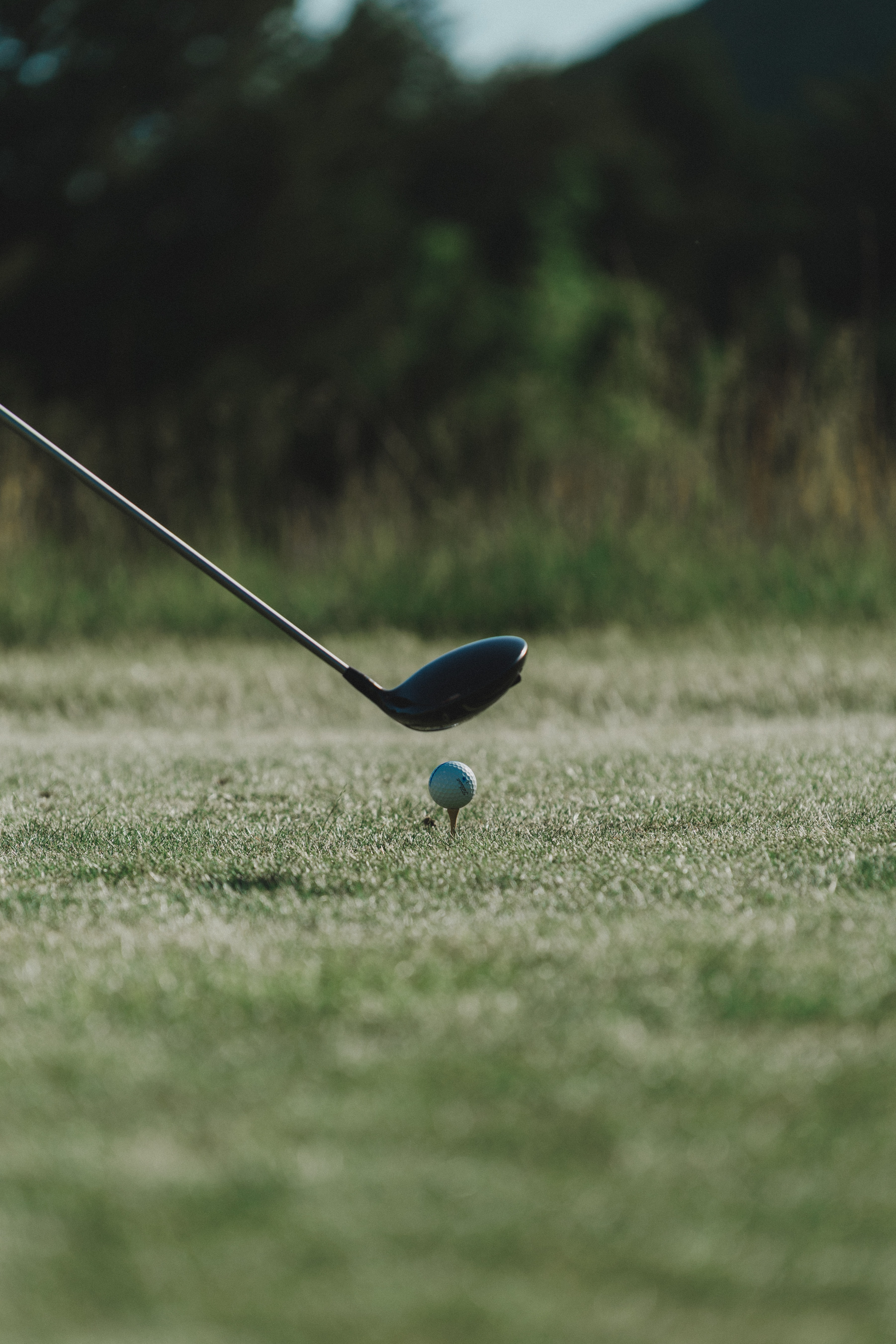Spill the Tee: Do Golf Tees Make a Difference?
Before we get into it properly, let’s get this out of the way: yes, golf tees make a difference on the way you play golf. For such a small piece of equipment, it can have a considerable impact on the way you play. There’s a massive amount of engineering that goes into the tiny tee, which can enhance, or even hinder, your individual playing style.
The Golf Tee’s design has come on in leaps and bounds, as they were originally created out of wet sand moulded into a cone. It wasn’t until 1899, when Dr George Grant invented a wooden tee, that the classic tee as we know it came into being. Since then, we’ve seen tees made from wood, plastic, rubber or bamboo on the golf scene and they’re made into different shapes and come in a variety of heights. With each of these differences having a direct impact on how you come into contact with the ball, it’s worth taking the time to work out what tee style you can use to develop the way you play golf.
With so many variables to keep in mind when you’re choosing a tee, you’ve probably come up with a bunch of questions about what will work best for you. Some of the most common questions people are asking about golf tees are:1. Are plastic tees better than wood?
Before we get into answering those questions, it’s important to point out that everyone plays golf differently. Tees can and will make a difference on the way you play, but what might work for one player just might not work with your individual play style. Sometimes the most important thing is to undergo some old-fashioned trial and error to work out what you prefer.
The Golf Tee’s design has come on in leaps and bounds, as they were originally created out of wet sand moulded into a cone. It wasn’t until 1899, when Dr George Grant invented a wooden tee, that the classic tee as we know it came into being. Since then, we’ve seen tees made from wood, plastic, rubber or bamboo on the golf scene and they’re made into different shapes and come in a variety of heights. With each of these differences having a direct impact on how you come into contact with the ball, it’s worth taking the time to work out what tee style you can use to develop the way you play golf.
With so many variables to keep in mind when you’re choosing a tee, you’ve probably come up with a bunch of questions about what will work best for you. Some of the most common questions people are asking about golf tees are:
1. Are plastic tees better than wood?
2. What height golf tee should I use?
3. Can golf tees add distance?
Before we get into answering those questions, it’s important to point out that everyone plays golf differently. Tees can and will make a difference on the way you play, but what might work for one player just might not work with your individual play style. Sometimes the most important thing is to undergo some old-fashioned trial and error to work out what you prefer.

Are Plastic Tees Better Than Wood?
Annoyingly, and rather vaguely, the best response to this is another question: what makes a tee “better” for you? Is it environmental friendliness? Or is it strength? If you work out what you want from a tee, then you can go from there.If you’re a golf purist, you’re more likely to say wooden tees are the best option out there for golfers. However, when working out a list of pros and cons for both plastic and wood tees, you’ll find they largely compare in terms of biodegradability, flexibility, and longevity.
Pros of Wooden Tees
1. They’re Biodegradable – Tees are small and likely to get lost around the golf course. When they’re made from natural materials like wood, their environmental impact is lessened.
2. Strong and Robust – Wooden tees of today are designed to be stronger than older models of wooden tee.
3. The Classic Option – When you picture a tee, you’re most likely thinking of a wooden tee.
Cons of Wooden Tees
1. Wooden tees may snap more than other options, depending on the way you play.
2. They may be easier to lose sight of in the ground, especially if they aren’t painted.
Pros of Plastic Tees
1. Long Lasting – Plastic tends to last a lot longer than other options, which allows for more usage.
2. Strong and Durable – It’ll take longer to go through your pack of tees, and their materials may reduce the friction.
3. A variety of Designs: Many innovative performance tees are made from plastic materials
Cons of Plastic Tees
1. Less Environmentally Friendly – Plastic tees take longer to breakdown than other tee options.
2. Prone to Bending - Low quality tees may bend after longer periods of use.
Of course, this classic discussion ignores the other tee options out there. If you don’t want to use either wood or plastic, then you can choose from a variety of other materials, including bamboo. Bamboo has emerged as a favourite alternative to both wood and plastic tees, as they’re often stronger than wooden tees, excellent for woods and drivers, and a sustainable biodegradable option.
With more golfers looking for environmentally friendly options that they can use on the course, this is a great option that combines the positives of both wood and plastic tees.
What Height Golf Tee Should I Use?
You should be changing your tee height based on what club you’re using. As a general rule, if you’re using a longer club, you’ll want your golf ball higher from the ground. Shorter clubs require the ball lower to the ground.Your clubs are all built differently, and your swing is going to be different for all of them. Golf.com investigated the way that driver tee height will impact ball flight, and how you can adapt the height for your own golfing style. They found that the ideal tee height is about 1.5 inches for a driver, saying the best way to check is seeing that “half the ball ‘peeks’ above the crown after you sole the club at address”.
One of the best ways to picture it is: the higher the tee the shallower your swing becomes. You’re effectively forcing yourself to hit up more on the ball, which will affect your flight. The lower the tee, the opposite happens; you’re effectively swinging down onto the ball to make contact.
Can Golf Tees Add Distance?
Yes, your golf tees can impact your distance, and it’s all based on the design. The structure and design of your golf tee can influence the friction and spin of your golf ball. Different tee designs can work with you and against you for distance, depending on your individual golfing style.If you’re trying to gain distance off your tee, you’ve got to consider what kind of friction you’re getting off your tee. Are you hitting up on the ball, so that it lifts cleanly off the tee? Or are you hitting down on the ball with your driver? If you prefer the negative angle of attack, your ball will be colliding into the tee as it’s launched off, meaning you’re creating friction that leads to increased spin and a possible reduction in distance.
The founder of Golf Laboratories, Gene Parente, is a leading expert in robotic testing in the golfing world. He’s developed golf testing technology that garner precise and consistent results, allowing him a unique perspective on what really makes a difference to your play. In a recent podcast episode with GOLF’s Fully Equipped, Parente stated “If you’re hitting down on the ball, what we found is the less surface area on the golf ball means the less friction, means less backspin, and that less backspin can equate to about 2-4 yards.”
There are a variety of golf tees out there that have been designed with the sole purpose of reducing the amount of friction that you build up when hitting your golf ball. And what does less friction mean? It means you have the chance to see your golf ball travelling further. If you know you’re not performing to the best of your potential, trying out one of these tees might be the change you need.
One design that’s built for reduced friction is the multi-prong tip tee. The different prongs lift the golf ball off the tee, reducing the amount of resistance you’d usually battle and allowing for better contact with the ball. Tees like 4 Yards More have been proven in robotic and field tests to improve the distance your ball travels. Champ Fly Tees are another multi-prong tee that are designed for greater accuracy and distance.
Another tee that’s designed for extra distance is the brush tee. Multiple bristles hold the ball on top, which means there’s a smaller surface area for them to drive off from. This tee also benefits from a consistent tee height, which means you’ll develop a regular swing off your driver. BrushT have a reliable long lasting tee that’s permitted under the USGA rules of golf.
The main thing to consider before you rush out to buy a load of new tees is working out whether the tee works well with your golf swing style. You can gain distance by using a new tee, but it’s worth working out if you’re losing that yardage due to a build up of friction in the first place.

Associated Product List


